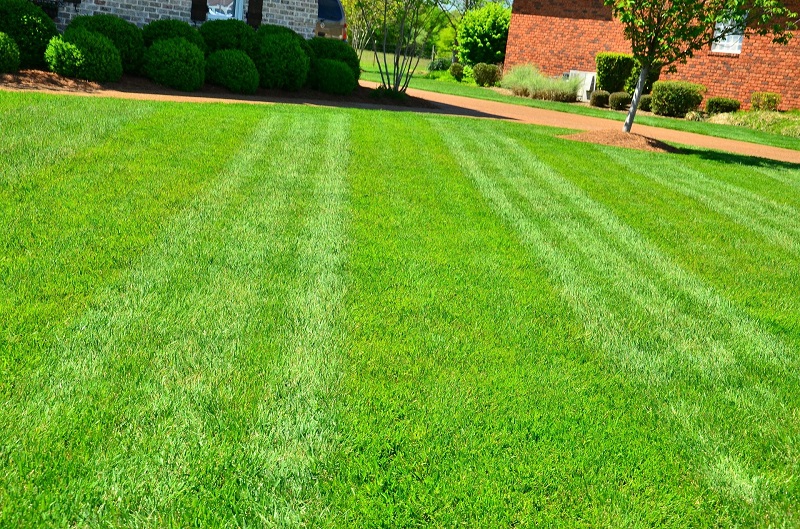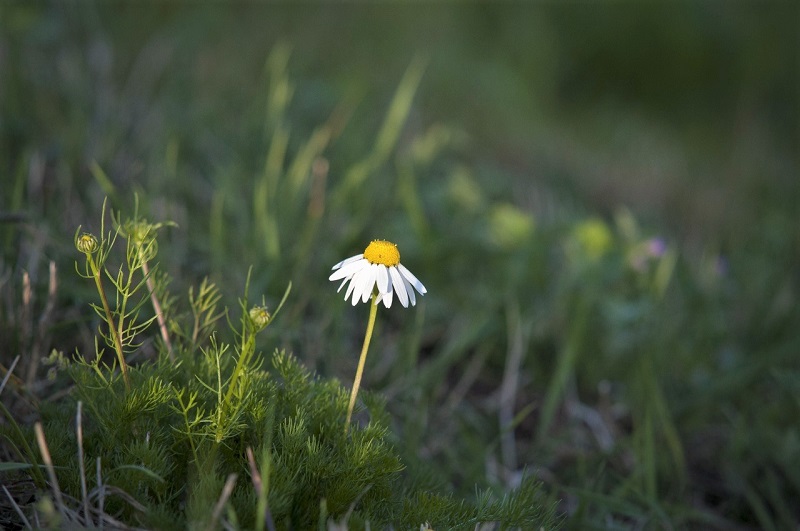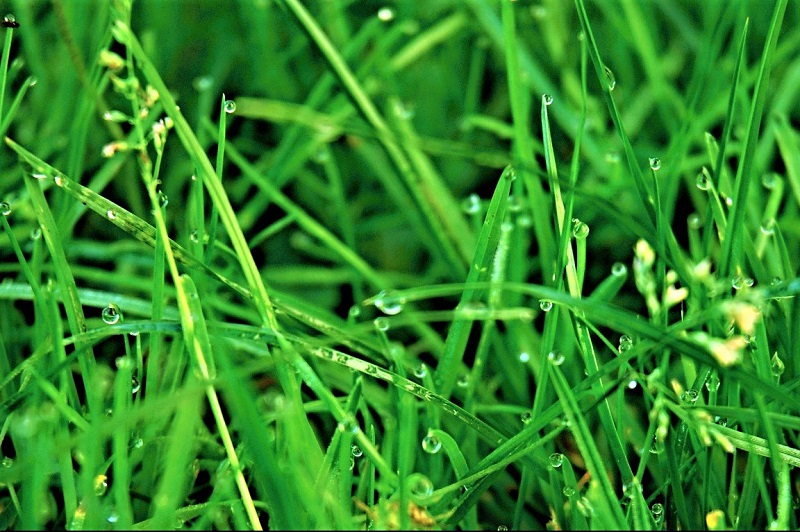
Our cave-dwelling ancestors, for whom life was an endless search for water in East Africa’s searing Rift Valley, would have whooped in awe. We would, too, if we could be bothered to consider the scale of the endeavor behind a glass of tap water.
Pristine water is pumped – sometimes from sources hundreds of miles away – through a network of underground tunnels. The water passes through sparkling clean state-of-the-art filtration systems, where it is treated with magic chemicals that keep our teeth from falling from our mouths.

Once treated, the water is sent out to our homes, where it is available on-demand with no more effort than a twist of a knob.
Our ancient cousins would have been equally baffled by our indifference to the miracle. Every day, modern Homo sapiens routinely dump billions of gallons of clean, perfectly potable water on lawns that produce no food, no fodder for livestock.
Growing a Chamomile Lawn
Let’s face it. Our pampered, chemical-laced, perfectly trimmed lawns are pointless, wasteful, and expensive. And gardening can be expensive enough as it is. If you side-step the ready-grown plants at the garden center and start from scratch, you will find that even seeds will cost you. Everything else requires hard work and some more money.
Every so often, however, you will find an exception that can hit on two perfectly logical gardening objectives. Hidden at the back of your kitchen cupboard, that old packet of chamomile tea bags can be the source of thousands of free seeds – and redemption.

The tradition of herbal lawns goes back at least to the medieval period. Because such lawns require minimal care and watering, more and more homeowners are now using them to replace resource-hogging grass lawns. Chamomile lawns are a particular favorite. They will not only withstand some foot traffic, but they will even release a wonderful scent of apples when trod upon.
Here is how to grow your own chamomile lawn.
Planting Chamomile
Find a patch of bare, free-draining soil in a sunny location. Remove any weeds from the area. You can use a long-handled cultivator for this task, but you may have to pull out some of the weeds by hand. Once cleared of weeds, spread three inches of compost and one inch of sand over the patch. Work the amendments six inches deep into the soil and then rake the area smooth.
Rip open a bag of chamomile tea and sprinkle it over the soil. You will need about ½ ounce of seed for every 1,000 square feet of lawn. Sow chamomile in the spring or early summer, after all danger of frost has passed and when no heavy rains are forthcoming.
Gently tamp the seed into the ground and lightly water the seeded lawn. Keep the area evenly moist until seedlings appear. Germination usually occurs within two weeks.

Care and Maintenance
When the they are about three inches tall, thin the chamomile seedlings until they are all six inches apart. The space will allow each plant to develop a healthy root system as it spreads to fill the area. Do not walk on your chamomile lawn for at least 12 weeks. If possible, keep foot traffic to a minimum for a year.
Once the plants are established, your chamomile lawn will require little maintenance and care. The plants will readily self-sow, which means you will only need to plant once. That is the point, after all.

But do keep the area moist and free of weeds. Chamomile will not endure heavy competition. Trim your lawn with a mower or shears in the late summer to remove dead flower heads.
Other than that, you can enjoy your lawn and its drifts of tiny, daisy-like summer flowers which, when walked on, have the aroma of sweet apples.








